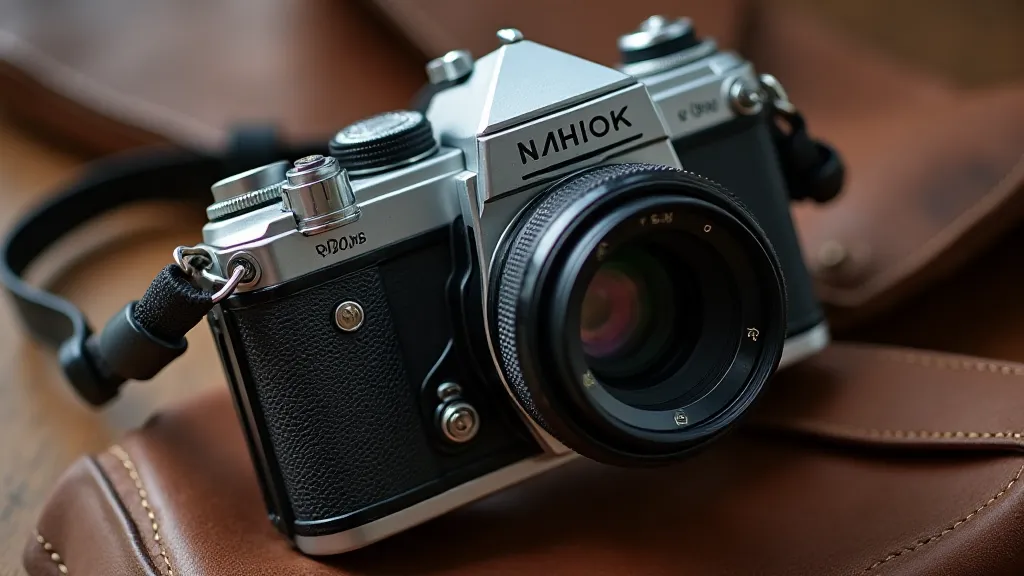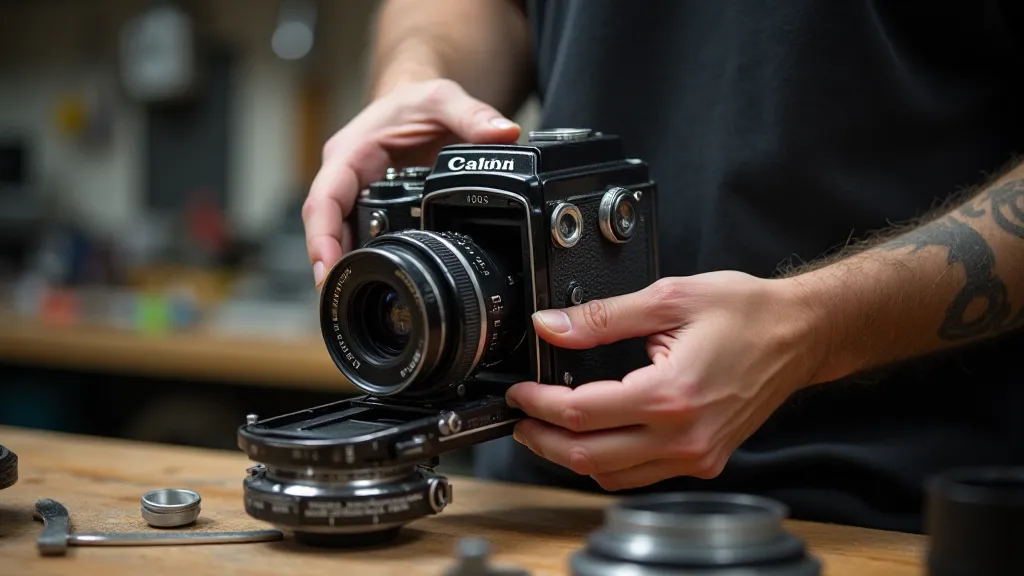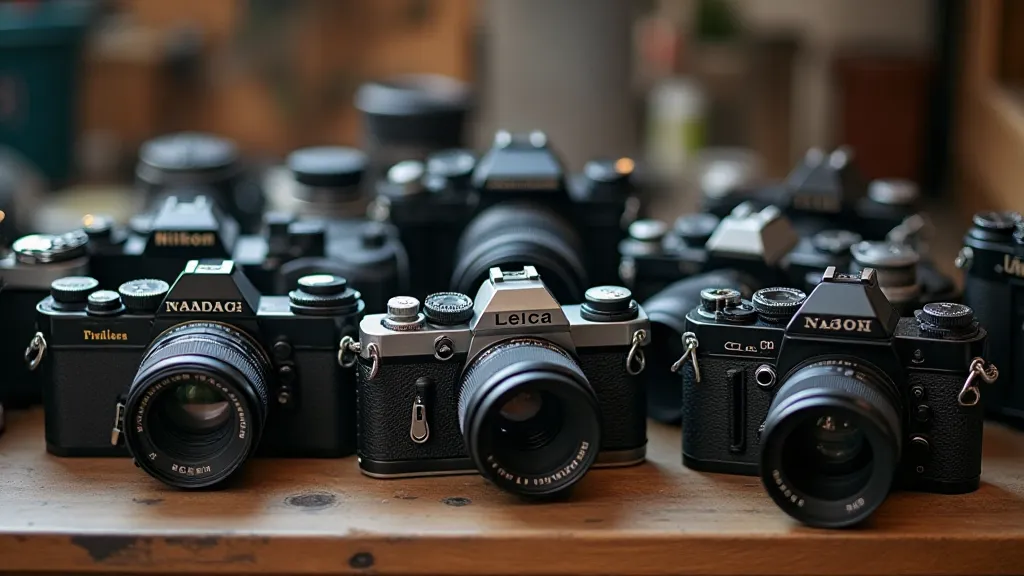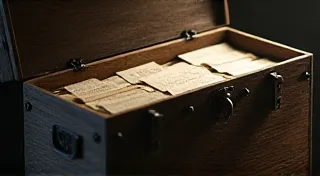The Silent Witness: Documentary Potential in Forgotten Film Camera Archives
There’s a particular beauty in rust, a quiet dignity in the cracked leather of a forgotten satchel, the gentle patina on brass that has witnessed decades of light and shadow. When we talk about vintage film cameras, we’re not merely discussing photographic equipment; we're talking about potential storytellers, silent witnesses to moments lost and memories fading. These aren't just machines; they are vessels, holding the echoes of laughter, the weight of sorrow, and the vibrant pulse of lives lived. And often, alongside these cameras, lie untold stories waiting to be unearthed within their archives.
I remember the first time I truly understood this. I was helping my grandfather, a retired photojournalist, clear out his attic. Amongst the dusty boxes filled with negatives and fragile prints, lay a small, unassuming Rolleiflex 2.8F. It wasn't just the camera itself, beautifully crafted from sturdy metal and with a distinctive bayonet lens mount, that captivated me, but the accompanying archive. A chaotic jumble of notebooks, contact sheets, and handwritten captions detailing assignments spanning decades – a visual diary of a life dedicated to capturing the world. Suddenly, a camera became so much more than a tool. It was a key.
A Legacy in Chrome and Glass
Consider the historical context. Film cameras, especially those built between the 1930s and 1970s, represent a remarkable era of craftsmanship. These weren't mass-produced, disposable items. Each component – from the intricate gears of the shutter mechanism to the precisely calibrated light meter – was a testament to human ingenuity and dedication. Companies like Leica, Nikon, Canon, and Kodak poured their expertise into creating instruments that would last a lifetime, and often, beyond. They were built to be repaired, to be passed down through generations. This inherent longevity is precisely what makes their accompanying archives so valuable.
Think about the photographers who wielded these cameras. They documented history as it unfolded: the post-war boom, the civil rights movement, the space race, the rise of popular culture. Their work isn't just visually stunning; it's a direct window into the past, unfiltered by the lens of modern interpretation. And it’s often these cameras, these forgotten machines, that hold the key to unlocking these lost narratives. The discipline and focus required to work with such equipment – to truly understand the nuances of aperture, shutter speed, and light – fostered a connection between photographer and subject that often feels absent in our digital age. Some might even argue that the very act of slowing down, of meticulously composing each shot, led to a deeper understanding of the moment, resulting in more evocative and meaningful imagery. This connection can be explored further by understanding the stillness between frames, a conscious effort to find mindfulness through the deliberate practice of manual photography.

The Archive: A Photographer’s Secret Garden
A camera archive isn't just about the photographs themselves. It's a constellation of clues: the notebooks filled with assignment briefs and personal reflections, the contact sheets revealing discarded shots and alternate compositions, the receipts for film and processing, even the handwritten notes scribbled on the backs of prints. These fragments collectively paint a richer, more nuanced portrait of the photographer's work and the world they inhabited.
Imagine discovering a box of negatives from a local newspaper photographer, tucked away in an abandoned building. Examining the contact sheets, you begin to piece together a story of a small town, its people, and its struggles – a visual record of a community’s identity, slowly fading from collective memory. Or picture finding a collection of Leica M3 negatives belonging to a freelance journalist, documenting the vibrant music scene of a city in the 1960s – a glimpse into a cultural revolution captured through a single lens. The potential for powerful documentary narratives is truly astounding. Often the aesthetic choices made by photographers, such as embracing the language of light leaks, add layers of character and emotion to the final product.
Often, these archives are overlooked. Families inherit boxes of old photographs and cameras, unsure of their significance or how to preserve them. They end up stored in attics and basements, vulnerable to the ravages of time and neglect. This is a tragedy, a loss not just for the families involved, but for the wider community.
Restoration and Revelation: A Symbiotic Relationship
The process of restoring a vintage film camera can be incredibly rewarding, a tactile connection to the past. Disassembling the camera, carefully cleaning each component, and replacing worn parts requires patience, skill, and a deep appreciation for the craftsmanship involved. But the act of restoration isn't just about bringing a machine back to working order; it’s about unlocking the stories it holds. The degradation of light seals is a common issue, and understanding replacing light seals on vintage cameras is essential for preserving their functionality and image quality.
As a camera is restored, its accompanying archive often reveals itself in new light. Previously obscured details become visible, faded inscriptions become legible, and previously disconnected images begin to form a coherent narrative. The restoration of the camera becomes intertwined with the preservation and interpretation of its archive. The challenges of preservation aren’t limited to just physical repairs. The imperfections in older lenses, the subtle shifts in color rendition – these are elements that contribute to a unique aesthetic. Appreciating chromatic aberrations and the alchemy of imperfection can elevate one’s understanding of analog photography’s artistic merit.

Ethical Considerations and Preservation
Accessing and sharing these forgotten archives carries significant ethical responsibilities. It’s crucial to respect the privacy of the individuals depicted in the photographs and to be mindful of the potential impact on their families. Proper attribution and context are essential for ensuring that the images are understood within their historical and cultural framework. Furthermore, preservation is paramount. Archival-quality storage, careful handling, and digitization are all necessary steps to ensure that these invaluable records are accessible to future generations.
Digitization, in particular, plays a crucial role in preserving fragile negatives and prints. While digital copies can never fully replicate the richness and depth of the original materials, they provide a valuable safeguard against loss and degradation. They also make it easier to share these images with a wider audience, fostering greater understanding and appreciation for the past. Beyond simply digitizing the images, careful attention should be paid to metadata – date, location, photographer (if known), and any contextual information that can enhance understanding and traceability. This meticulous approach is vital for ensuring that these visual records remain accessible and interpretable for generations to come.
The sheer volume of material contained within these archives can be overwhelming. Imagine a single photojournalist’s career spanning decades, documenting everything from local events to major historical moments. The sheer quantity of negatives, prints, and associated paperwork represents a significant undertaking to catalog and preserve. It’s not merely a matter of scanning images; it’s about building a comprehensive digital repository that can be searched and explored by researchers, historians, and anyone interested in uncovering the stories hidden within these visual records. The potential for new discoveries and fresh perspectives is truly immense.
More Than Just Machines: Witnesses to Time
Ultimately, vintage film cameras and their accompanying archives represent something far greater than the sum of their parts. They are tangible links to the past, silent witnesses to the human experience. They offer a unique opportunity to connect with history on a personal level, to understand the lives and struggles of those who came before us. By carefully curating and preserving these fragments of the past, we can contribute to a richer understanding of our collective heritage. Consider the impact of a single photograph – a fleeting moment captured in time, capable of conveying a powerful message across generations. These cameras, and the archives they safeguard, are vessels for those stories, waiting to be rediscovered and shared.
The stories embedded within these archives can also offer valuable insights into the evolution of photographic techniques and equipment. Examining the cameras themselves, the lenses they used, and the film they exposed reveals a fascinating trajectory of technological advancement. It’s a journey from cumbersome, hand-built instruments to increasingly sophisticated and automated systems. The accompanying archives, with their detailed records of processing techniques, film types, and exposure settings, provide a window into the practical knowledge and expertise of past generations of photographers.






